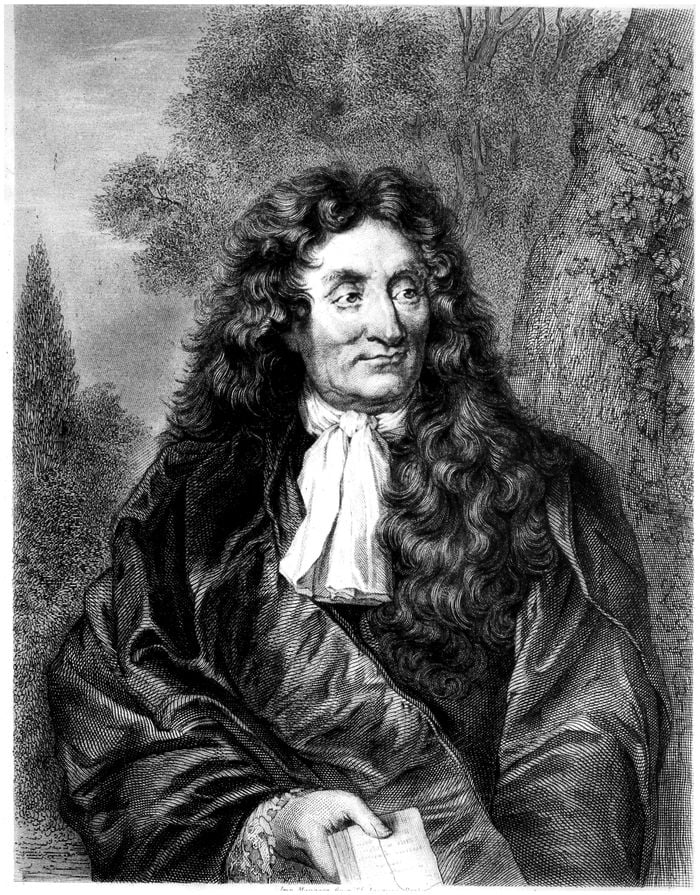Jean De La Fontaine (1621-1695)
One of the great figures of the age of Louis XIV, Jean de La Fontaine was born at Chateau-Thierry in 1621. He studied at Rheims and Paris, though he returned to his home afterward. In 1647 he married and entered the government service.
He left his wife shortly after his marriage, and placed himself under the protection of several persons of rank and power. In 1668 the first collection of his Fables was pub¬lished, and the following year his Tales in verse. He wrote a romance and several plays besides, was elected to membership in the French Academy, and died in 1695.
La Fontaine`s Fables are by all counts his greatest achievement. These are, in the words of Lanson, “a picture of human life and French society.” Based on disop and Phasdrus and the other fabulists, the little masterpieces of La Fontaine are highly artistic literary perfor¬mances. The Four Friends represents the ultimate perfection of this type of fable.
The present version is translated by Barrett H. Clark, and appears for the first time in this collection.
The Four Friends
(From The Fables)
A rat, a raven, a tortoise, and a gazelle were once upon a time the greatest friends imaginable. This happy friendship first began in a home which was unknown to any human being. However, there is no place safe from humankind, be it in the densest wood, under the deepest river, or on the highest peaks where eagles perch. One day the graceful gazelle was disporting herself when by ill-luck a barking hound (that ferocious servant of ferocious man) found her trail and followed the scent. The gazelle ran on and on.
At mealtime the rat addressed his friends: “Brothers, how comes it that we are only three to-day? Is Miss Gazelle so fickle that she has forgotten us?” Up spoke the tortoise: “Now, if I were a bird, like the raven, I would at once take flight and learn what accident had befallen our fleet-footed sister, and where.
My dear rat, it is shameful to doubt her affection for us.” Whereupon the raven flew off, and from a dis¬tance caught sight of the unfortunate gazelle—he could recognize her face—all tangled up in a snare, and suffering agonies. So back he flew and gave the alarm. He was no fool, and he thought it would be foolish to ask the why and wherefore, the when and how of the poor sufferer, as would some pedantic schoolmaster, and thereby lose the chance of saving the victim.
The three friends, on hearing the sad news, took counsel and delib¬erated. Two voted to hurry to the spot where the poor gazelle was lying. “Our friend with the shell,” said the raven, “might very well remain here to keep watch over the house; when would such a slow creeper reach the spot? Why, the gazelle would be dead.”
So without further discussion the other two flew to the assistance of the gazelle. But the tortoise was also set on going. Bewailing his inability to walk fast and cursing fate for having made him carry his house on his back, he trudged on behind the others.
Rongemail (that was the rat`s name) cut the snare. Was not that fortunate? But just then the huntsman came along. “Who has set loose my gazelle?” he cried. Rongemail quickly scurried into a hole in the ground; the raven flew up into a tree, and the gazelle ran off into the woods. The huntsman, now very angry and seeing no trace of his prey, caught sight of the tortoise and forgot his anger. “Why,” he asked himself, “lose courage because my snare has not worked this time? Here is something for my supper.” And so saying, he put the tortoise into his bag.
The poor tortoise would have met his fate had not the raven told the gazelle, who came forth from her hiding-place, pretending to be lame. The man, eager for the chase, threw his bag to one side, and Rongemail immediately opened it as he had opened the snare, thus depriving the huntsman of a supper on his friend the tortoise.
Read More about Foltyn`s Drum part 1








